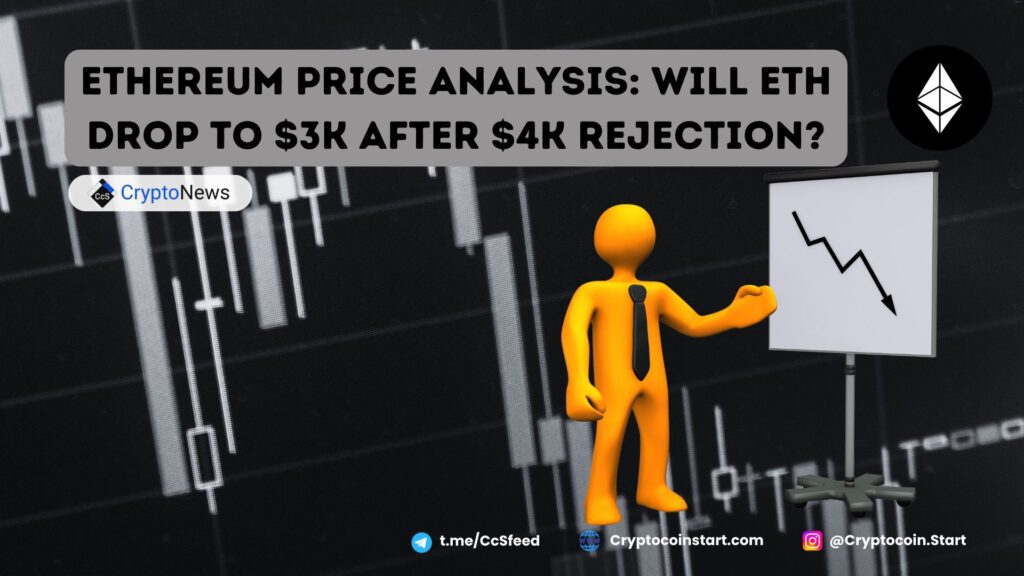
Ethereum Price Struggles Below Key Resistance
Ethereum has failed to reach new record highs, leaving market participants wondering whether the bull run is over. The price remains below the $3,500 mark, which has now become a significant resistance zone. Despite an initial bullish phase earlier in November, Ethereum’s price has encountered rejection at higher levels, raising concerns about its near-term price action.
Let’s take a closer look at Ethereum’s price behavior using technical analysis on both the daily and 4-hour charts.
Technical Analysis of Ethereum
The Daily Chart
On the daily chart, Ethereum entered a bullish phase at the beginning of November after bouncing off the $2,300 support level. However, the $4,000 resistance zone has been a major hurdle, preventing the price from pushing higher. The recent rejection at the $4,000 zone has led to a drop below the $3,500 level, which is now acting as resistance.
Key observations from the daily chart:
- Support Level: The price rebounded from $2,300, but now faces resistance at $3,500 and $4,000.
- Resistance Level: Ethereum has been rejected multiple times at the $4,000 resistance zone.
- Next Target: The price is likely to drop toward the $3,000 support zone and the 200-day moving average, which is also positioned around $3,000.
As long as Ethereum remains above the 200-day moving average, the market can still be considered in a bullish trend. However, if the price falls below this key level, a deeper correction toward the $2,000 zone could be in play.
The 4-Hour Chart
On the 4-hour timeframe, a clear double-top pattern has formed, with Ethereum failing to break above the $4,000 resistance level twice. This is a classic bearish signal, suggesting that the market is losing bullish momentum.
Key points to note from the 4-hour chart:
- Double-Top Pattern: The price failed to break above $4,000 twice, creating a bearish double-top pattern.
- Neckline Break: The neckline of the double-top pattern, which is the $3,500 level, was broken to the downside.
- Bearish Momentum: The Relative Strength Index (RSI) indicates bearish momentum, suggesting a potential consolidation or further correction in the near term.
Given the current market structure and RSI readings, Ethereum may face further downside pressure or consolidation before it can resume its upward trend.
Sentiment Analysis: Ethereum Taker Buy Sell Ratio
In addition to technical analysis, understanding market sentiment is crucial for assessing Ethereum’s potential price movement. One way to gauge sentiment is by analyzing the Taker Buy Sell Ratio, a metric that measures the aggressiveness of buyers versus sellers in the futures market. This chart provides insights into whether buying or selling pressure is dominating the market.
Ethereum Taker Buy Sell Ratio Trends
The Taker Buy Sell Ratio has been below one for over a year, indicating that sellers have been more aggressive than buyers in executing their positions. More recently, this metric has experienced a sharp decline, suggesting that selling pressure is currently driving the market correction.
Key insights from the Taker Buy Sell Ratio:
- Downward Trend: The 100-day moving average of the Taker Buy Sell Ratio has remained below one for over a year, indicating persistent selling pressure.
- Recent Drop: The ratio has seen a significant drop, which may be contributing to the current price correction.
- Market Sentiment: As long as the Taker Buy Sell Ratio continues to trend downwards, it will be difficult for Ethereum to recover and break above resistance levels.
Futures market sentiment shows that selling pressure, rather than spot market selling, could be driving the current price decline. Until this metric improves, Ethereum’s price may struggle to regain upward momentum.
Conclusion: Ethereum’s Price Outlook
Ethereum is currently facing strong resistance at the $3,500 level, and its failure to break through the $4,000 zone has led to a bearish correction. While the price is likely to drop toward the $3,000 support zone in the short term, the overall market trend remains bullish as long as Ethereum stays above its 200-day moving average.
However, the sentiment in the futures market is currently tilted toward selling, as indicated by the Taker Buy Sell Ratio, which could continue to suppress any potential rally. Traders should watch key support levels closely and monitor market sentiment for further clues on Ethereum’s price direction.

